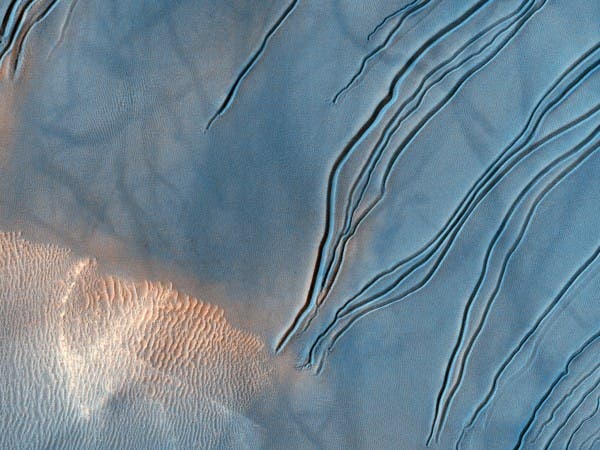It’s like Christmas before Christmas – the Mars Reconnaissance Orbiter has started sending back images it took of the red planet, and there’s just so many fantastic stuff it feels like Christmas has come earlier this year. Now, the MRO sent back images peculiar features along the slopes of dunes: long, sharply defined grooves (pictured) that seem to appear and disappear seasonally.

The fact that they appear and disappear indicates that they are something seasonal; astronomers initially thought they were trails left by tumbling boulders, but there are no boulders at the end of the line, so this couldn’t be the case. The next theory was that they are signs of flowing water, but that seemed to be a bit too optimistic. Now, a new model shows that those lines are likely the result of sand-surfing dry ice.
During the planet’s winter, it gets extremely cold and carbon dioxide freezes, creating what is called “dry ice”. During the spring thaw however, the carbon dioxide sublimates back into gas, but some of it may actually break off and slide down, much like a boulder would. This explains why astronomers didn’t see the boulders at the end of the gullies – it was dry ice which then sublimated.
But it gets even more interesting – the pieces of dry ice aren’t simply rolling down; according to the model, the bases of the chunks are continually sublimating, resulting in a hovercraftlike motion that gouges the dune while propelling the ice down slopes. The model has been recreated by scientists in Utah, and it worked just as expected. While researchers are working on refining the model even more, they also hope to observe the actual process as it’s happening.






